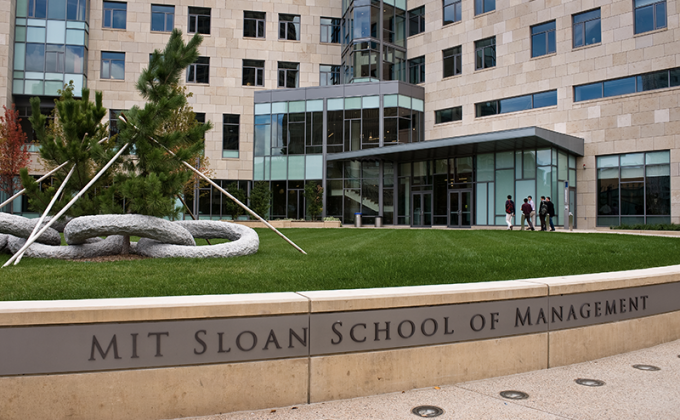One of the biggest learnings of the ongoing COVID-19 saga is the importance of leadership and the glaring gaps that it has exposed. In situations of global crisis, we turn and seek leadership at all levels, be it global, national, state, corporate, community, and even within our own family units. ‘Corona Times’ has really thrust the role of leadership into the spotlight and show the consequences of a lack of such.
On a national level, we see how crucial leadership is as different leaders and leadership styles manage the same problem with such vastly differing results. In business, we are starting to see the effects of lockdowns on enterprises and how they are coping with the new environment. Much of course is dependent on a company’s industry and financial standing, those with larger reserves and longer cash runways will theoretically have a better chance of weathering the storm and coming out of this crisis intact.
As lockdowns in most countries have gone into month 2 and beyond, some businesses have closed, some have downsized, others are in survival mode, but a few have pivoted, reinvented, and seem to be coming out stronger. While each company is unique and exists within its own context, the years to come will cite case studies of companies that came out stronger post COVID-19 and when analyzed, one of the common denominators between all these companies success would be the strength of collective leadership it had.
Nations can be forgiven for having inept or under-par leaders. This is due to inefficient systems and politics where the selection of leaders is done (mostly) via elections which in turn can be influenced by emotion, sentiment, and manipulation. However, in the corporate world, this should not be the case.
Decisions on leadership appointments (CEO and senior management) are rational ones, picking from a curated pool of top class, highly capable, and experienced candidates. So, if this is the case why can’t more companies with highly capable and talented CEOs and senior teams weather the storm, pivot, reinvent and find their way through this COVID induced crisis?
All Hands on Deck!
An argument is that senior leadership alone is not enough to pull a company through an economic crisis such as the one we are facing now. One man or even ‘a few good men’ cannot steer a ship in this ‘perfect storm’. It’s all hands on deck and requires the best crew with leaders in each and every department operating at near to maximum capacity to weather this storm.
In order to pull through, corporations need to have leaders leading and operating at each and every level of the organization. Collective leadership from top to bottom is what it required, not just inspiration from a CEO and the senior team.
The more leaders an organization has within its ranks, the higher its chance of survival as it will be able to adapt, pivot, and implement faster than others. How many leaders an organization has within at all levels is a vital determinant of whether a company can not only come out of this crisis, but come out stronger than before. So, given that companies need to have more leaders within their ranks, how do you fill that gap in the face of crisis?
Enter The Business School
Business schools were generally created to fill this gap. To create, develop and nurture top talent into the leaders of the corporate world. The top American Business Schools have been the breeding ground of business leadership talent that has seen American corporations lead global business and commerce since the turn of the 20th century. It is the graduates of these schools which power the majority of today’s Global Fortune 500 companies.
In South East Asia, there is only a handful of institutions that are built on the proven principles of the American Business School model. The Asia School of Business (ASB) is one of the few, setup in 2015 as a one-of-a-kind collaboration between the globally renowned MIT Sloan School of Management and the Central Bank of Malaysia.
The vision is simple, to be a regional platform and hub which creates highly knowledgeable, principled, transformative, and market-ready leaders for corporations in Asia. The method? Integrating the MIT DNA and delivering it in-action within the heart of Asia.
Creating Leaders on the Go!
ASB offers 2 routes to creating leaders on the go for corporations in Malaysia and the region. First is the ASB MBA, an award-winning innovation of the MIT Sloan MBA, integrated and delivered in Asia, taking into account Asian business practices, perspectives, and culture. It blends theory with practice via the leveraging of companies within the region as knowledge partners and ‘classrooms’ to learn in.
The Working Professional (WP) MBA allows corporations to send their top talent (hi-potentials) into this program while keeping them in their current role. It is an integrated journey where candidates immediately implement MBA learnings within their organization while they are studying. The signature ‘Action Learning’ curriculum which is inherited from MIT requires a student to complete 4 specially defined projects in their own company within the 22-month duration of the course.
The candidate spends roughly 25% of their time studying and the remaining 75% at work, applying their learnings into action! These projects are defined and delivered using the MIT Action Learning framework and implemented with facilitation from a dedicated ASB Faculty member and business coach (seasoned ex-management consultants).

Major corporations like AirAsia (Malaysia), Sapura Energy (Malaysia), Phu Hung Securities (Vietnam), and Daiwa Steel Tubes (Japan), have sponsored their hi-potential employees for an ASB MBA in the inaugural cohort of 2019. They are reaping the benefits as the program makes their employees consultants in training, immediately applying their learnings and working on delivering solutions within their companies as soon as they step out of each class.
Group Learning & Development
Now, what if your organization needs to develop more than a few select (Hi-Potential) leaders and requires an aggregated shift in mindset and capability? The answer would be to get in touch with the Executive Education arm of ASB. On the 1st of Jan 2020, the ICLIF Leadership and Governance Centre was integrated into ASB and is now known as the ICLIF Executive Education Centre.
The center offers a complete suite of leadership, management, and governance courses in an open enrollment or custom-built format. Courses can be as short as 1-day programs or a series of modules that accumulate to becoming an advanced certificate in management. For larger groups, the center can develop customized L&D curriculum to achieve strategic objectives of a company.
Plugging the Collective Leadership Gap
COVID19 is here to stay until a vaccine is developed and deployed to the global population. The new normal is unpredictable but what is certain is that the ‘old normal’ is past. To remain competitive, organizations should adopt a strategy to fill their ranks with capable leaders at all levels. The Asia School of business was setup to support corporations to achieve this.





